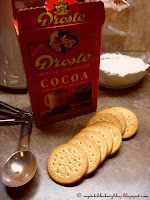Around this time of year, when you walk along the narrow streets of Holland at dinner time, it is very possible that you would smell the lovely, spicey, clove and nutmeg filled smells of hachee, an old fashioned traditional beef and onion stew, emanating from a kitchen window. And if you stand still and concentrate on that mixture of smells, you might be able to detect a sweet and sour undertone, a bit cabbage-like, but not much. You'd be so right! Red cabbage, braised with apples, is THE vegetable to serve with hachee and boiled potatoes. It's a typical Dutch winter dish. The sweetness of the apple combines perfectly with the tanginess of the cabbage and the vinegar, and makes for a beautiful mix.
Most of our cabbages are grown in the province of North-Holland, near the West-Frisian town of Langedijk, where many varieties of red and green cabbage originated and are still grown to this day.
As with practically any low-and-slow food, the braised cabbage will taste even better the next day (if there's any left). I've found myself many times sneaking a forkful of refrigerated cabbage in the middle of the night. The slight crunch of the cabbage, the sweet and sour combination, the tenderness of the apples...…yum!!
As with practically any low-and-slow food, the braised cabbage will taste even better the next day (if there's any left). I've found myself many times sneaking a forkful of refrigerated cabbage in the middle of the night. The slight crunch of the cabbage, the sweet and sour combination, the tenderness of the apples...…yum!!
Rode kool met appeltjes
1 small apple
4 bay leaves
3 whole cloves
2 tablespoons red wine vinegar or apple cider vinegar
1 cinnamon stick
1 tablespoon brown sugar
1 tablespoon cornstarch
Peel the outer, tough leaves off the cabbage. Cut the cabbage in half, then each half in half again. This will give you an easy opportunity to cut out the core which is tough and bitter. Slice each quarter in thin strips. Rinse the cabbage and add to a pan with a heavy bottom.
Add enough water to cover the cabbage about halfway, and set it on the stove. Add the bay leaves and cinnamon stick, cover and bring to a slow boil. Stir in the vinegar, add the sugar, stir and cover again. Turn down the heat to a simmer. Let it slowly braise on the back of the stove, for a good half hour.
In the meantime, peel, core and quarter your apple. Stick the three cloves in the largest piece of apple before adding them to the pan, and slowly simmer until the apple is soft. Remove the cabbage and apple from the pan until you only have the braising liquid left. Fish out the bay leaves and the cinnamon stick, and pick the cloves off the apple.
Make a slurry with the cornstarch (one tablespoon of water to one tablespoon cornstarch). Bring the cooking liquid back up to a boil, and stir in the slurry. At first it will color the liquid pink but as the cornstarch absorbs the water, it will clear up. Continue to stir until the sauce has thickened. Add the cabbage and apple mix back into the pan, stir a couple of times to mix the sauce with the vegetables. Taste, adjust with salt and pepper. If you like it sweeter or tangier, add a bit more sugar or vinegar. When it's cooled, you can keep it in the fridge for two days.
Red cabbage also pairs very well with game: rabbit, hare, venison and elk.
















































